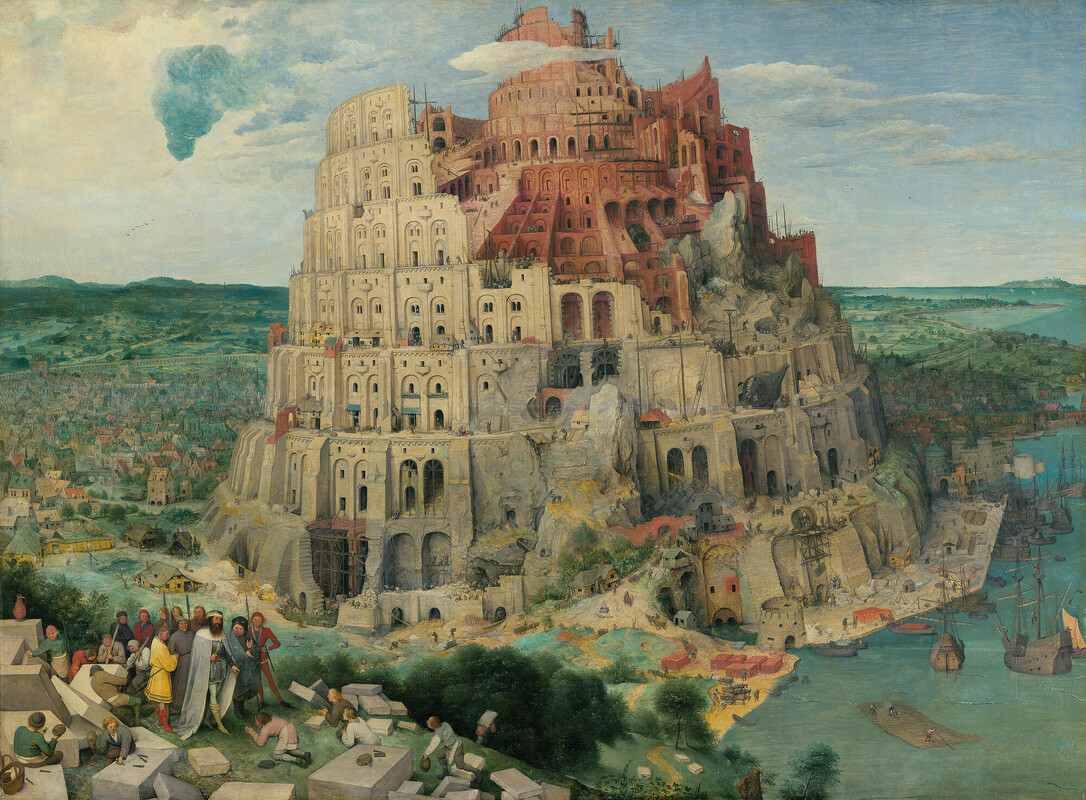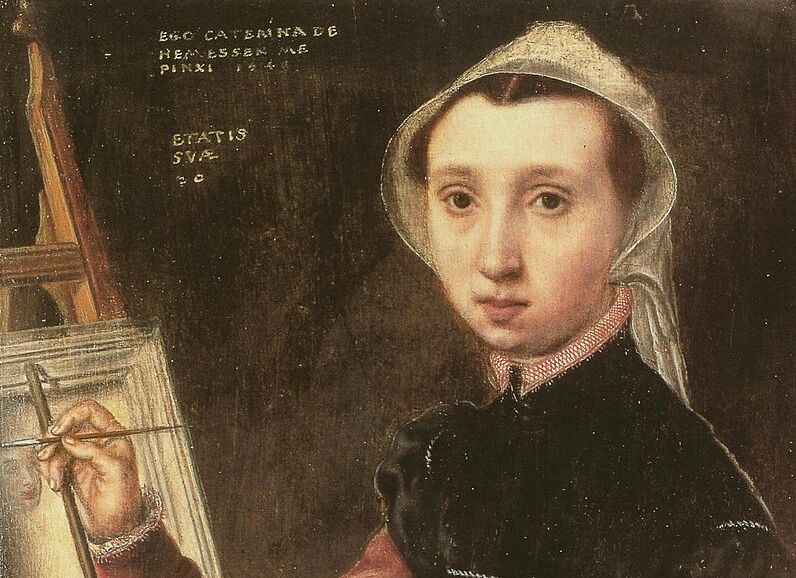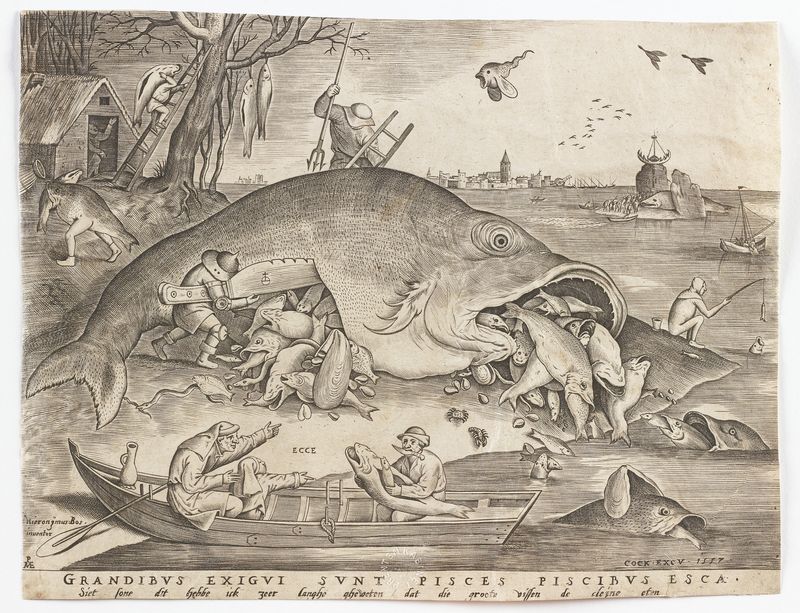Mad Meg
Pieter Bruegel the Elder and the Renaissance
A mad woman with armour and sword leads a robber band of women among the most grotesque monsters towards the open mouth of hell: in 1563 Pieter Bruegel the Elder painted a panel that still speaks to the imagination.
In 1894 the Antwerp art-collector Fritz Mayer bought a striking, but to him unknown painting. It turned out to be a masterpiece by Pieter Bruegel the Elder from 1563. The title Dulle Griet (Mad Margaret or Mad Meg) is taken from the Schilderboek (Painters’ Book, 1604) by Karel van Mander. He called Bruegel a follower of Hieronymus Boschpopular painter a number of generations before Bruegel, known mainly for his fantasy creatures and monsters. , since he also painted ‘ghostly scenes and pranks’. Indeed, the painting combines a very dark scene with humoristic details.
Bruegel is mostly known for his peasant scenes and depictions of proverbs. Mad Meg proves he was more versatile. His relatively small preserved oeuvre also includes large religious paintings and wintry or sunlit landscapes. All his works testify to a sharp sense of observation. No other 16th-century painter gives one the feeling of coming closer to the people of those times.

Vienna, Kunsthistorisches Museum
Pieter Bruegel the Elder, The Tower of Babel, 1563. In Bruegel’s Tower of Babel the harbour town is based on Antwerp. The tower itself is inspired by the Colosseum in Rome. The central theme of the painting, as in the Biblical story of the Babylonians, is pride.
Pieter Bruegel the Elder and the Renaissance
Bruegel the Elder is the best-known painter of the 16th century Low Countries. Yet we do not know much with certainty about his life. He was perhaps born in about 1525/1530 near Breda and moved to Antwerp in the late 1540s.
Bruegel painted for customers from the economic, religious and intellectual elite. He often produced landscapes with lots of figures, such as celebrating or working peasants. They are busy sowing and harvesting, eating and drinking. As an artist he gained recognition through his prints, disseminated by printer-publishers who reached a wide public with new techniques. Today his works count among the masterpieces in the museum collections from Antwerp and Brussels to Vienna and New York.
Bruegel was an odd man out in his time. His style and themes are not really typical of the (Italian) Renaissance, which was becoming popular in the Low Countries. In the Renaissance, literally ‘rebirth’, artists were inspired by themes from Classical antiquity. Bruegel knew Italian art through his travels as a young painter, but he diverged both in style and choice of subject. Other 16th-century painters like Quinten Metsijs, Jan Gossaert and Frans Floris were much closer to the tradition of the Italian masters like Leonardo da Vinci, Raphael and Michelangelo. They were mostly based in Antwerp, in the 16th century the artistic centre of the Low Countries.
Focal points
Discover more on this topic
Non-fiction
Mens, mythe en zinnelijkheid: de renaissance van Jan Gossart: het volledige werk
Mercatorfonds, 2010.
Bruegel in zwart en wit: het complete grafische werk
KBR, 2019.
Bruegel: de schilder van boeren en heiligen
Meulenhoff, 2019.
Wijvenwereld. Vrouwen in de middeleeuwse stad
Vrijdag, 2019.
Brueghel en tijdgenoten: kunst als verborgen verzet?
Waanders Uitgevers, 2021.
Mevrouw Renaissance, of: Het leven en werk van stammoeder Brueghel
EPO, 2019.
Pieter Bruegel: de biografie
Polis, 2016.
Gelukkige stad: de gouden jaren van Antwerpen (1485-1585)
Amsterdam University Press, 2017.
Portretten van bekende schilders uit de Lage Landen
Polis, 2020.
Mayken Verhulst (1518-1599). De Turkse manieren van een artistieke dame
Museum Het Zotte Kunstkabinet, 2005.
Antwerpen. De gloriejaren
De Bezige Bij, 2021.
Grote kunst voor kleine kenners: de Vlaamse Meesters
Borgerhoff & Lamberigts, 2019. (9+)
Vrouwenstreken. Onvergetelijke schilderessen uit de Lage Landen
Lannoo, 2000.
Elck zijn waerom: vrouwelijke kunstenaars in België en Nederland 1500-1950
Ludion, 1999.
Hieronymus Cock: de renaissance in prent
Mercatorfonds, 2013.
Fiction
Dulle Griet
De Eenhoorn, 2017. (8+)
Wildevrouw
De Bezige Bij, 2022.
Pieter Bruegel zo heb ik u uit uw werken geroken
Davidsfonds, 1990.
Het geheim van de Vlaamse Meesters
De Eenhoorn, 2019. (9+)
De Avonturen van Suske en Wiske: Het Spaanse Spook (nr. 70)
Standaard, 1952.
Suske en Wiske: De dulle griet (nr. 78)
Standaard, 1966.










